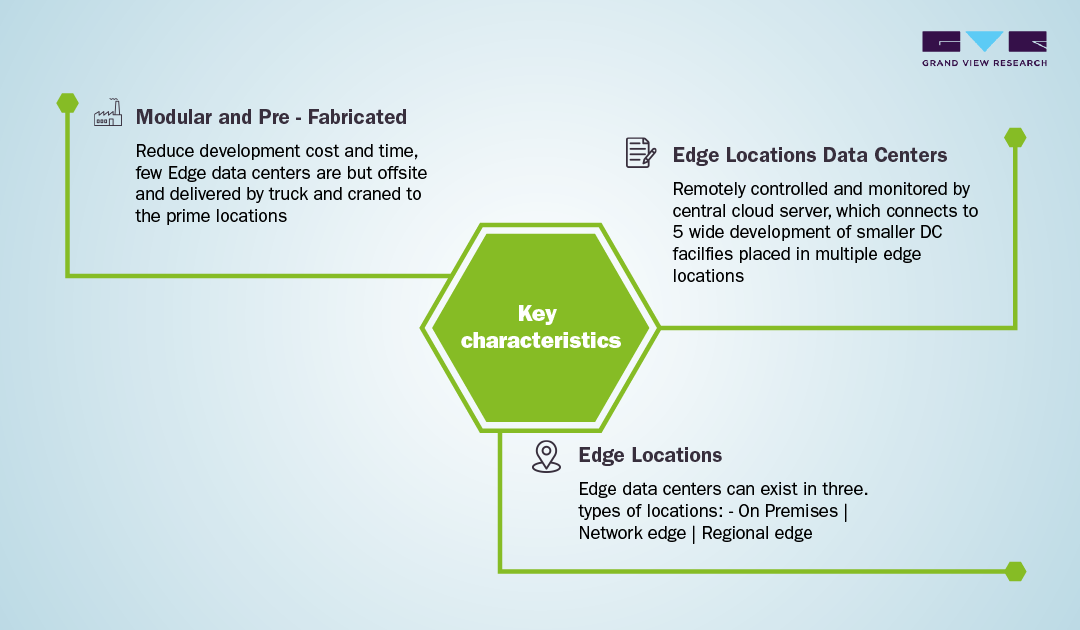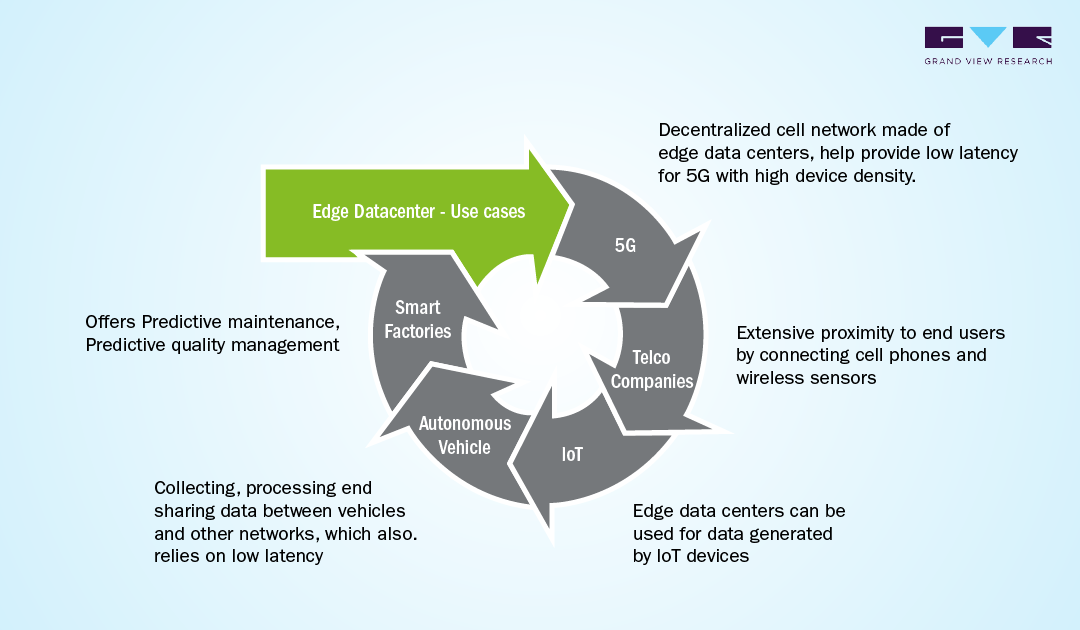Edge Data Center Market Size, Share & Trends Analysis Report By Region, And Segment Forecasts, 2023 To 2030
马克t Overview
Today’s digital world runs on the ability to build an exceptional customer experience anytime, anywhere. That means immediate access to information and a fundamental shift in how users think about data centers. Most of the prominent players have moved to public and private clouds, co-location facilities, the edge cloud, and evolving data centers using virtualization and software-defined networks. The reason for the shift toward Edge Data Centers is smart agility, convenience, and cost-effectiveness. According toGVR, more than 90 percent of IT organizations believe their environment becomes complex and impenetrable.
Recent transformations in data center construction are size. Some data centers have become smaller and more scattered as edge data centers. Edge data centers are relatively smaller than large cloud data centers and will need to be located near places where people congregate and move. It has decentralized facilities, equipped with power and cooling infrastructure, that provide computing and storage in a location closer to where data is being generated and/or used. There are two types of Edge datacenters (Metro and Mobile), which are typically the size of a shipping container, are placed at the base of cell towers, and provide substantial support to IoT (Internet of Things) and the autonomous vehicle segment to increase processing capability and enhance customers’ experience. They are also helping mobile network operators (MNOs) to provide faster content services to mobile subscribers, and prefabricated modular Edge data centers which are ideal for a variety of industries that need hyper-local computing and storage capacity.

马克t Outlook
There's no question that the Edge data center must be reimagined and redesigned to account for the new distributed Edge data center, which should undergo significant modernization initiatives to deliver agility, flexibility, elastic scale, seamless integration, inherent security, and simplified management:

Trends Driving the Edge Data Center Market:
- The increasing penetration of 5G networks has contributed to the increase in high device density use cases such as smart factories and city, connected devices, and IoT. Small edge data centers offer low latency, cost-effective solutions, and a large bandwidth to such applications, ensuring seamless connectivity.
- Low latency processing by edge datacenters manages large data volume generated by the proliferation of IoT sensors and devices in industrial and home settings.
- Low-cost edge data centers help bridge the widening data cap of 64 zettabytes between usable data created and data center traffic.
- The use of network function virtualization (NFV) and software-defined networking (SDN) in edge data centers helps in replacing the costly hardware used in traditional data centers, resulting in cost-effectiveness and enhanced performance.
- Decentralization of edge datacenters facilitates enhanced performance to businesses and consumers, especially companies operating in the AR/VR and video streaming space.
马克t Opportunity
According toGVR, the market of edge data centers is expected to nearly triple by 2025. Be great to the potential for these smaller, locally located data centers to reduce latency, overcome recurrent connections, and store and compute data close to the end user. However, organizations have different strategies and timing to create a business opportunity in its marketplace.
Increasing demand of mobile data traffic is a major factor projected to accelerate the globaledge datacenter marketin the next few years. Additionally, SMEs are expected to rapidly adopt edge data center solutions in the coming years because they are observing robust digitalization and offering online services, which need data-intensive applications.GVR, witnessed that APAC is the fastest growing market by 2030 at a growth rate of 19.3%, where North America dominating the region extensively.
Key Players
- 365 Operating Company LLC
- Eaton Corporation
- EdgeConneX, Inc.
- Flexential Corporation
- Fujitsu Ltd.
- Hewlett-Packard Enterprise Company
- Hitachi Vantara
- Huawei Technologies Co., Ltd.
- IBM Corporation
- Panduit Corporation
- Rittal GmbH & Co. KG
- Schneider Electric SA
- Vapor IO, Inc.
- Vertiv, Co.
- vXchnge Holdings, LLC
Few questions answered by Edge data center market study:
- What is the current edge data center market size?
- What kind of organizations will witness faster growth in the edge data center market?
- Why edge data centers are the future?
- What is the major driver for the edge data center industry?
- Who is the top-ranked player in the edge data center market?
- What are the potential applications for edge datacenter?
Authored By
Pawan Srivastava, Manager & Cluster Lead, Technology Research, Grand View Research
Pawanheads one of the major Clusters of GVR - ICT & TMT domain. Competent with a rich combined experience of 9 years in IT & Strategy Consulting, Market Research, and Analytics. Leveraged aptitude in translating corporate vision to overcome complex business challenges through Competitive Analysis, Qualitative & Quantitative Research. He works with a solution-oriented approach to convert business challenges into actionable solutions. He tracks market intelligence around emerging technology spaces such as Artificial Intelligence, Machine Learning, Robotic Process Automation, Datacenter, Cloud Computing, Cyber Securities, Autonomous Vehicles, Mobility Devices and, to name a few